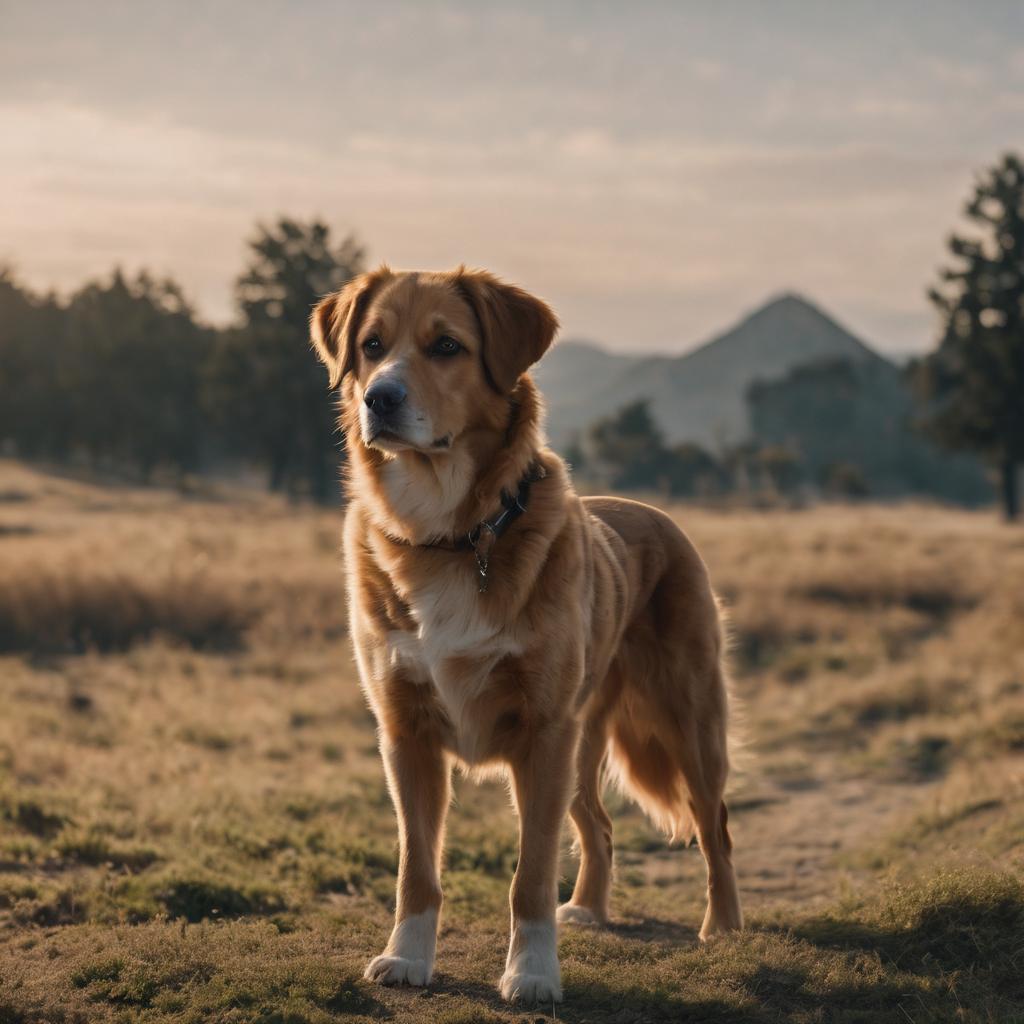
The History and Evolution of Dogs as Domesticated Animals
Contents
- 1 Origins of Canis lupus familiaris: Tracing the Ancestry of Dogs
- 2 Early Interactions: How Dogs First Became Companions to Humans
- 3 Ancient Breeds: Exploring the Diversity of Early Domesticated Dogs
- 4 Dogs in Ancient Civilizations: Their Roles and Importance
- 5 Shifting Roles: Dogs as Working Partners Throughout History
- 6 Selective Breeding: The Influence of Humans on Dog Characteristics
- 7 Dogs in Art and Literature: Depictions of Canine Companionship Through the Ages
- 8 Dogs in Religion and Mythology: Their Symbolism and Significance
- 9 Dogs in Modern Society: How Their Roles Have Evolved
- 10 The Future of Dog Domestication: Trends and Challenges in Contemporary Times
Origins of Canis lupus familiaris: Tracing the Ancestry of Dogs
The origins of Canis lupus familiaris, commonly known as dogs, can be traced back thousands of years. Through the study of genetics, archaeology, and paleontology, scientists have been able to piece together the fascinating ancestry of our beloved canine companions. It is believed that dogs evolved from wolves, with the domestication process occurring around 20,000 to 40,000 years ago.
The exact timeline and location of this domestication event are still subjects of ongoing research and debate. However, evidence suggests that early humans formed symbiotic relationships with wolves, leading to the gradual development of the dog we know today. This process involved natural selection favoring wolves that exhibited certain traits, such as decreased aggression and increased tolerance towards humans. Over time, these selected wolves became more dependent on humans for survival, eventually diverging from their wolf ancestors to become a distinct species – Canis lupus familiaris.
Early Interactions: How Dogs First Became Companions to Humans
Dogs have been our faithful companions for thousands of years, but how did this special bond between humans and canines first form? The origins of this enduring partnership can be traced back to early interactions between our ancestors and wild wolves. Experts widely agree that dogs evolved from wolves, with the domestication process beginning around 20,000 to 40,000 years ago.
Although the exact details of this transformation are still a topic of debate among scientists, it is believed that early humans began to develop a mutually beneficial relationship with wolves. These wild canines likely offered protection, assistance in hunting, and companionship to our ancestors. In turn, humans likely provided a stable food source and a safe environment for these wolves, which eventually led to the development of a distinct species – Canis lupus familiaris, the domestic dog. This bond between humans and dogs would lay the foundation for a remarkable partnership that would evolve and flourish throughout history.
Ancient Breeds: Exploring the Diversity of Early Domesticated Dogs
The domestication of dogs dates back thousands of years, resulting in a diverse array of ancient breeds that have played unique roles in human societies. These early domesticated dogs varied greatly in size, shape, and temperament, reflecting the specific needs and preferences of different cultures and regions. From the sturdy and versatile huskies of the Arctic to the agile and swift Salukis of the Middle East, these ancient breeds exemplify the incredible adaptability and versatility of our canine companions.
One notable ancient breed is the Basenji, believed to be one of the oldest dog breeds in existence. Originating from Central Africa, these small, muscular dogs are known for their intelligence and independence. Renowned for their exceptional hunting skills and their distinctive yodel-like vocalization, Basenjis offer a fascinating insight into the diverse purposes and skillsets that early domesticated dogs possessed. Exploring the ancient breeds allows us to glimpse into the rich tapestry of human-canine interactions throughout history, showcasing the integral role that dogs have played in our lives.
Dogs in Ancient Civilizations: Their Roles and Importance
Dogs played vital roles in ancient civilizations across the globe. These loyal creatures served multiple purposes, often serving as valuable companions and guardians to their human counterparts. In ancient Mesopotamia, for example, dogs were revered as protectors and were frequently depicted in art and literature. They were trained to guard homes and livestock from intruders, their sharp senses and fierce loyalty making them effective deterrents.
In ancient Egypt, dogs were highly regarded for their hunting skills and were often associated with the god Anubis. These canines were expert trackers and were used to assist during hunts, aiding in capturing game for sustenance. Additionally, they were believed to possess a supernatural ability to guide and protect souls in the afterlife, leading to their inclusion in burial rituals and tomb artwork. Dogs in ancient Egypt were treasured companions, receiving the same level of adoration and care as their human counterparts.
Shifting Roles: Dogs as Working Partners Throughout History
Dogs have played a crucial role as working partners throughout human history. One of the earliest roles of dogs was in hunting. Their acute sense of smell, agility, and loyalty made them valuable assets in tracking down prey and aiding in successful hunts. Dogs were often used to pursue and retrieve game, and their speed and endurance were highly valued.
As civilization progressed, dogs began to take on more diverse roles in different working environments. In agricultural societies, dogs were utilized as herding animals, helping farmers manage and guide livestock. Their intelligence and obedience made them effective in corralling sheep, cattle, and other domesticated animals. In coastal regions, dogs were used for maritime purposes, such as swimming out to retrieve fishing nets or guarding against predatory sea creatures. Dogs also became indispensable in guarding property and alerting humans to potential threats, offering a sense of security and companionship in various working contexts.
Selective Breeding: The Influence of Humans on Dog Characteristics
Selective breeding, also known as artificial selection, has played a crucial role in shaping the characteristics of dogs. Through careful mating of specific individuals, humans have been able to manipulate the genetic traits of dogs to create breeds with varying sizes, coats, temperaments, and purposes. This process has led to an incredible range of diversity among domesticated dogs, from the playful and small Chihuahua to the loyal and powerful Great Dane.
With selective breeding, humans have been able to selectively perpetuate desirable traits while minimizing or eliminating certain undesirable traits. For example, in some breeds, individuals with a strong herding instinct were selected and bred together, resulting in the development of highly skilled herding dogs. Similarly, dogs with a keen sense of smell were bred to create exceptional tracking or scent detection dogs. This deliberate manipulation of genetic traits has allowed humans to create breeds that excel in specific activities or serve unique functions, demonstrating the immense influence that artificial selection has had on shaping the characteristics of dogs.
Dogs in Art and Literature: Depictions of Canine Companionship Through the Ages
Throughout history, dogs have been depicted in various forms of art and literature, showcasing their close bond with humans. Paintings, sculptures, and illustrations have captured the loyalty, affection, and companionship that dogs provide. From ancient civilizations to modern times, the portrayal of canine companionship has evolved and reflected the changing relationships between humans and dogs.
In ancient art, dogs were often depicted in religious and mythological contexts, symbolizing qualities such as loyalty, protection, and guardianship. They were often depicted alongside gods, goddesses, and even in burial tombs, emphasizing their significance in the afterlife. These artistic representations not only showcased the physical characteristics of different breeds but also aimed to portray the emotional connection between dogs and humans. In literature, dogs have been featured in various roles, from faithful companions to heroic figures. Classic novels and poems have beautifully captured the unwavering devotion and unconditional love that dogs offer, resonating with readers across generations. Such artistic and literary depictions have played a role in shaping the perception of dogs as beloved companions in society.
Dogs in Religion and Mythology: Their Symbolism and Significance
Dogs hold a significant place in various religious and mythological traditions across the world. In many ancient civilizations, dogs were seen as sacred creatures and played important roles in religious rituals. They were believed to possess divine qualities and were often associated with deities or supernatural beings. In Egyptian mythology, for example, the god Anubis was depicted with the head of a jackal, symbolizing the dog’s connection to death and the afterlife. Similarly, in Greek mythology, the three-headed dog Cerberus guarded the gates of the Underworld, serving as a symbol of protection and the transition between life and death.
The symbolic significance of dogs in religion and mythology extends beyond their association with the divine. Dogs were often revered for their loyalty, courage, and ability to protect. In Norse mythology, the god Odin was accompanied by two wolves, Geri and Freki, who represented his loyal companionship. Dogs were also thought to possess keen senses, making them guardians and guides in both the spiritual and earthly realms. In the ancient Persian religion of Zoroastrianism, the dog was regarded as a guardian against evil, able to sniff out malevolent spirits and protect households from harm. These beliefs highlight the deep-rooted connection between humans and dogs, as well as the recognition of their extraordinary qualities that have shaped their symbolic significance in religious and mythological contexts.
Dogs in Modern Society: How Their Roles Have Evolved
In the contemporary society, dogs have undergone significant transformations in their roles and the way they interact with humans. One notable change is the shift from primarily being working partners to becoming valued family members and companions. In the past, dogs were primarily used for various tasks such as hunting, herding, and guarding. However, in modern times, their roles have expanded to extend beyond traditional working purposes. Today, dogs are cherished as loyal and loving companions, providing emotional support and unconditional love to their owners.
Another evolution in dogs’ roles in modern society is their involvement in therapeutic settings. As our understanding of the positive impact that dogs can have on human well-being has grown, they are now frequently utilized in therapy programs and interventions. Dogs are often trained as therapy dogs, visiting hospitals, nursing homes, and schools to offer comfort and companionship to individuals in need. This shift has been driven by the growing recognition of the unique bond between humans and dogs and the ability of these remarkable animals to provide emotional support and improve mental health.
The Future of Dog Domestication: Trends and Challenges in Contemporary Times
In modern times, the domestication of dogs has reached a new stage, marked by emerging trends and challenges. One notable trend is the increasing popularity of designer breeds, resulting from intentional crossbreeding to create unique and sought-after characteristics. These designer breeds often come with a hefty price tag, reflecting the demand for dogs that possess specific traits or appearances. However, this trend raises concerns about the ethical implications of selective breeding and the potential health issues that may arise from manipulating the genetic makeup of these animals.
Another trend in contemporary dog domestication is the growing prevalence of rescue and adoption. With greater awareness of the plight of homeless dogs, many individuals and families are actively seeking to give abandoned or neglected dogs a second chance. This movement towards rescue and adoption not only provides loving homes for these animals but also promotes the importance of responsible pet ownership and advocates for the rights and welfare of all dogs. However, this trend also presents challenges, such as ensuring proper screening and matching of dogs with suitable owners, as well as addressing the issue of overcrowding in animal shelters and the need for better education on responsible pet care.



Average Rating